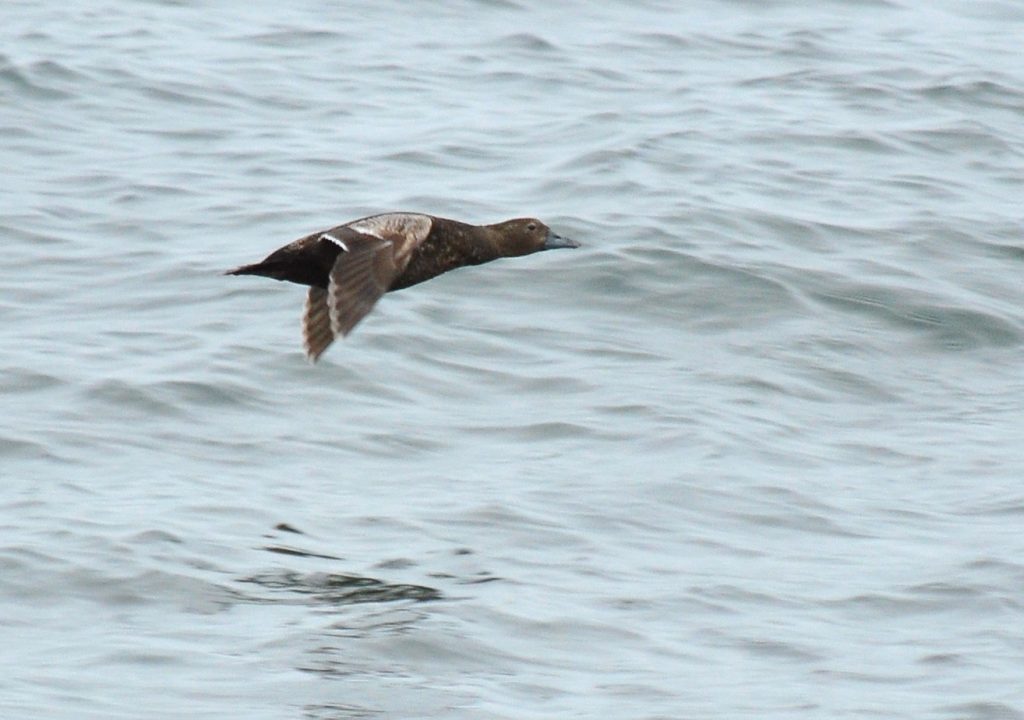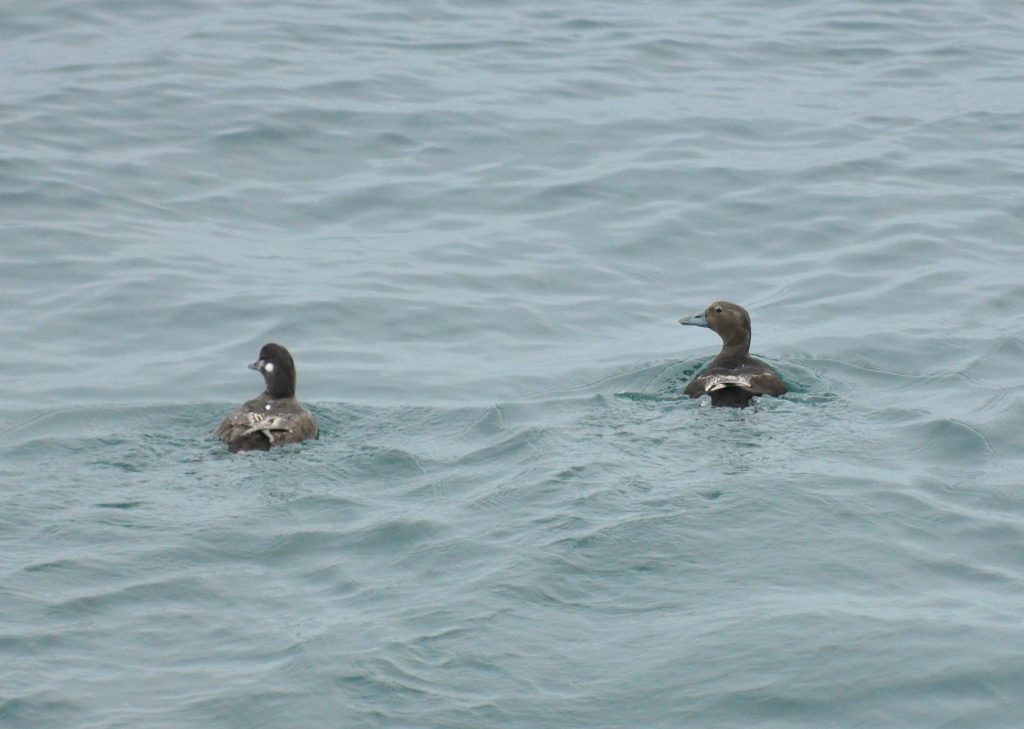Primarily a winter resident, this species is found regularly into the early spring. It is most common when coverage is at a minimum; with most individuals moving north by late winter/early spring, but they do linger into the spring most years though rarely past May and very rarely into late June and even July with a handful of years having birds over-summer completely. Birds have remained into June in only eight years during the 1990s, 2000s, and 2010s with birds remaining into July and through the entire summer in 2001, 2005, 2006, 2007, and 2011. The main push of southbound individuals does not begin until October or November; however, early fall migrants are often noted in late August or September, and on occasion as early as mid-July. This species peaks in abundance during the mid-winter in years where the Bering Sea ice pack is located near to the Pribilofs, though does not completely envelope the islands.
This is the most unique of the four eider species with individuals often located amongst flocks of Harlequin Ducks (Histrionicus histrionicus), with which they share more similar habits as opposed to the other three eiders.


